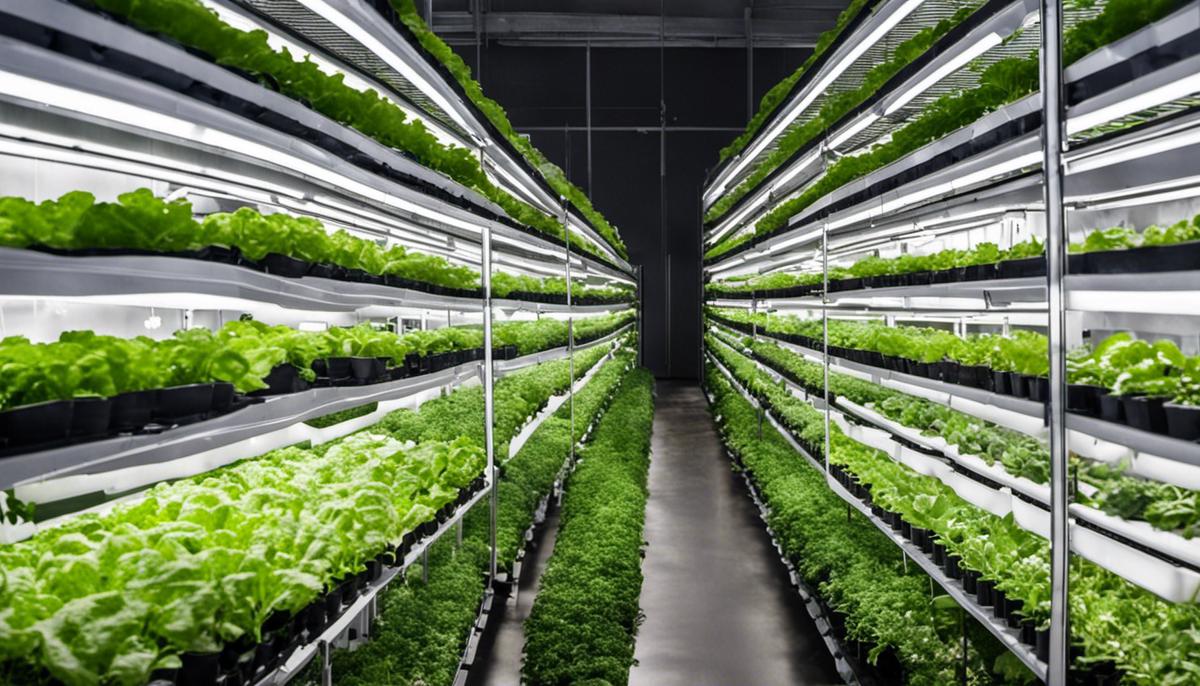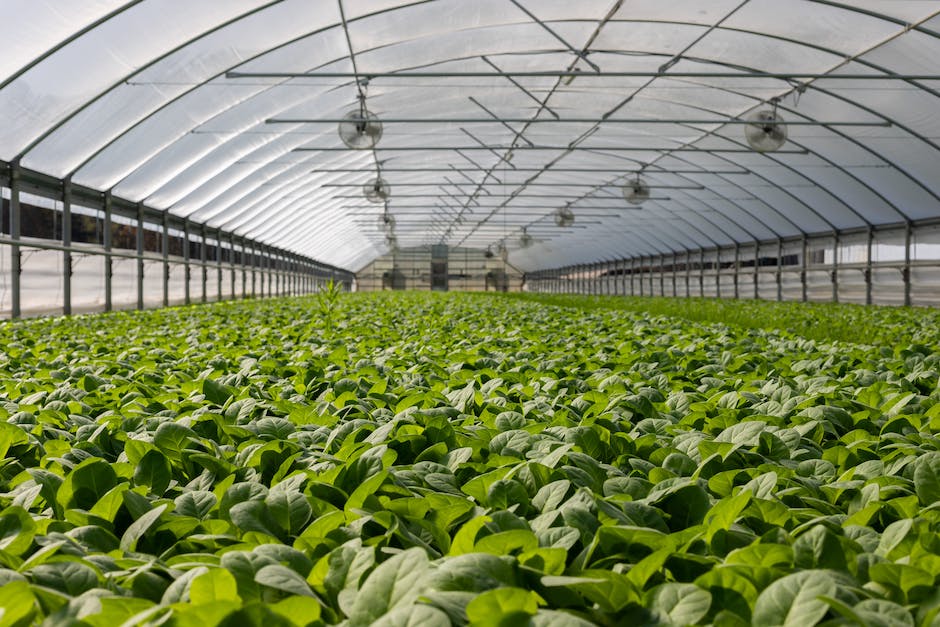
All about indoor farming
Description: In a world increasingly concerned with food security, climate change, and resource conservation, indoor farming is surfacing as one of the promising solutions. Indoor farming, a revolution in agriculture, aims to create optimal growing conditions for plants inside controlled environments, thus combating the unpredictability of weather conditions and enabling year-round crop production. Nonetheless, indoor farming is not just about moving crops indoors; it's a complex interplay of science, tech innovations, and environmental stewardship. This discussion aims to delve into the profundities of indoor farming, exploring the scientific principles behind it, the balancing act of its benefits and challenges, and glimpse into the future fueled by cutting-edge research and innovations. The Art and Science of Indoor Farming: Accelerating Plant Growth in Controlled Environments In the intricate theater of agriculture, the science of indoor farming is rapidly gaining prevalent recognition. Comprehending this relatively novel form of agricultural practice necessitates an understanding of plant biology, environmental control, and most importantly, the quintessence of manipulating nature in a meticulously assembled indoor environment. One monumental advantage of indoor farming, also known as controlled-environment agriculture (CEA), compared to conventional farming, lies in the precise regulation of environmental factors. It involves an unerring control over light, temperature, humidity, and carbon dioxide levels, which play quintessential roles in the photosynthesis process, hence promoting the faster growth of plants. Light, unequivocally, leads the factors critical for photosynthesis and plant growth. In a controlled environment, artificial light sources such as LEDs enable manipulation of lighting conditions, including light intensity, duration, and spectrum, promoting optimum photosynthetic action thus stimulating plant growth. Bluer wavelengths support vegetative growth while redder wavelengths facilitate flowering and fruiting, underscoring the importance of spectral tuning. Indoor farming also embraces temperature control with eminent precision. Each plant species has a distinct temperature range for optimal growth. A cross-disciplinary approach integrating engineering controls guarantees an ideal temperature range creating a favorable environment for maximizing plant productivity. Humidity levels animate unequivocal effects upon plant transpiration, a vital process dissipating heat and absorbing nutrients better. Matching the right temperature with the necessity for optimum humidity levels necessitates state-of-the-art scientific wizardry with accuracy and ease, which indoor farming readily offers. Carbon dioxide (CO2) supplementation carries an inordinate impact on accelerating plant growth. Plants in a CO2-rich environment reportedly experience dramatically enhanced photosynthetic rates, driving growth and augmenting yields in a minimal timeframe. Notwithstanding these supreme command over environmental factors, indoor farming also stands unchallenged due to its capacity for vertical stacking – utilizing multiple layers of growth platforms stacked above one another. This revolutionizes agricultural yield per square foot, with less water usage and nutrients, transforming the dynamics of traditional farming. The rebellion against the traditional metaphor of soil, sun, and wide-open spaces doesn’t stop here. Indoor farming also employs hydroponics – growing plants in nutrient-rich water solutions rather than soil. Plant roots demand water, oxygen, and nutrients, all of which can be admirably provided by hydroponic solutions, fostering an unprecedented rate of plant growth and production. This intricate dance of science, engineering and botany is a testament to humankind’s dogged efforts to conquer, understand, and harness the wild unpredictability of Mother Nature to sustainably produce food. Indoor farming, a vivid testament of our scientific endeavor, paints a vibrant and promising future for a world grappling with increasing food demands and decreasing arable lands. As we delve further into our exploration of indoor farming, or Controlled-Environment Agriculture (CEA), we can establish that this agricultural model has distinct advantages and limitations from both an environmental and economic standpoint. To begin, consider the water conservation benefits of indoor farming. Conventional farming methods typically require significant volumes of water, much of which evaporates before it can be absorbed by the roots of crops. In contrast, indoor farming allows for precision irrigation systems that reduce water waste. In hydroponics, for instance, water can be recirculated, dramatically reducing usage. Environmentally, this is a significant advantage as it presents a sustainable solution to farming in regions with water scarcity or during periods of drought. Moreover, indoor farming mitigates the use of pesticides, herbicides, and fungicides that are pervasive in outdoor agriculture. Such chemicals often have detrimental environmental impacts, contaminating soil, water, and even food crops. In a controlled environment, however, pest and disease pressures are considerably reduced, making the use of such chemicals largely unnecessary. Turning our attention to the economic viewpoint, indoor farming allows for year-round crop production, thus boosting the productivity and profitability of the farm. Regardless of external weather conditions, controlled environments enable continuous harvest cycles and consistent yield, thereby promising stable income and reducing seasonality risks associated with outdoor farming. However, it is important to note that indoor farming is not without its limitations. Economically, the initial establishment cost of indoor farming facilities can be quite substantial. The equipment, labor, and energy required to set up a fully controlled growth environment may pose a significant hurdle for potential investors. Moreover, ongoing energy costs for lighting, temperature control, and other environmental factors can be relatively high. Environmentally, indoor farming demands energy-intensive inputs, particularly electricity for artificial light sources and climate control systems. This dependency on energy can result in substantial carbon emissions, especially if the energy is sourced from non-renewable resources. Hence, sustainable energy sources like solar power might be crucial to mitigate the environmental footprint of indoor farms. Last but not least, indoor farming, while versatile, could not suit all crop types equally. Some crops, particularly those that are tree-based or root-intensive, may not be feasible within the spatial limitations of indoor facilities. In conclusion, while indoor farming is an innovative solution with clear benefits such as water conservation, reduced use of harmful chemicals, and year-round production, it is not a panacea. High setup and energy costs, as well as dependence on non-renewable energy sources, can be significant obstacles. Moreover, the feasibility of growing a wide range of crops indoors remains to be elucidated. Nonetheless, further research and technological advancements stand to enhance the effectiveness and efficiency of indoor farming, making it a critical part of our global food security toolkit in the future. Despite its novelty status, this advancement in agriculture shows promise for a new paradigm in crop production. The increase in efficiency, maximized use of space, and controlled environment offers an innovative approach to food production, making it a cornerstone of the 21st-century agricultural revolution. In terms of technological development, the role of artificial intelligence and machine learning cannot be overstated. The fusion of technology and agriculture presages a future where digitized, automated systems monitor and address the intricate needs of each plant. Innovations such as machine learning algorithms offer potential for fine-tuning growth conditions to optimize productivity while minimizing resource waste. Coupled with predictive analytics, it becomes possible to anticipate issues before they arise, bolstering yield quality and quantities, and potentially reducing wastage from crop diseases and pests. Combined with the growth of renewable energy sources such as solar and wind power, indoor farms may be able to mitigate their initial energy cost investments. Leveraging renewable energy can decrease dependency on fossil fuels, reducing the carbon footprint and making indoor farming even more sustainable. It signals the possibility of creating fully self-sustainable indoor farms, thus promising a future marked by eco-conscious production methods. Another prime focus of future advancements includes the perfection of aeroponic systems, a soil-less culture where roots are suspended in air and nourishment is provided via a mist of nutrient-enriched water. These systems have the potential to radically reduce water usage and further amplify the efficiency of indoor farming. Concurrently, the developments in genetically modified organisms (GMOs) might yield varieties of crops specifically tailored for the indoor farming environment, remarkably enhancing productivity and profitability. Lastly, the incorporation of the circular economy model, wherein waste generated in this system, such as excess plant matter, might be repurposed for generating biofuels or organic plant feed, further underscores the sustainability aspect of indoor farming. In sum, indoor farming hints at a future where sustainable, efficient, and technologically-advanced production strategies will play a pivotal role. Its progress glimmers as a beacon of hope in our journey towards a secure and sustainable global food future. By transcending traditional farming's boundaries, indoor farming is on the precipice of revolutionizing our approach to agriculture, standing as a testament to human ingenuity and our incessant drive to innovate for a better world. As we look to the future, indoor farming appears more than a passing trend—it is an essential part of our strategy for a sustainable planet. The discipline is pushing the boundaries of traditional agriculture, utilizing scientific knowledge, technology, and innovative approaches to maximize crop yield, minimize environmental impact, and adapt to changing climates. However, addressing the challenges is as important as harnessing the benefits, with economic feasibility playing a crucial role in its widespread adoption. Only with a balanced perspective can we fully comprehend the potential of indoor farming and work towards a future where it forms a vital part of global food security. This journey of understanding indoor farming is crucial as we step into a new era of agriculture; an era of controlled environments, artificially intelligent farms, and genetically tailored crops.The Science Behind Indoor Farming

Benefits and Challenges of Indoor Farming

The Future of Indoor Farming: Research and Innovations
The prospective vista for indoor farming appears bright and brimming with potential for sustainable, production-driven enhancement.
